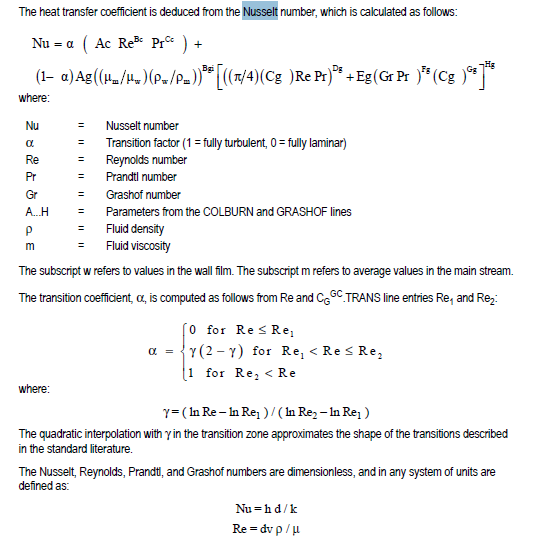hongxiangping
Mechanical
Hi, I'm just going through a calculation left by an old senior from my company to determine Nusselt number for gas flow inside tube for a simple cross-flow heat exchanger performance estimation, and he was using the formula as below:
Nu = 0.023(Re^0.8)(Pr^0.4)[(Tb/tf)^0.8]
where
Tb is the bulk temperature, which is the arithmetic mean between hot end and cold end of the gas
tf = Tb - LMTD/4
1. Anyone seen this formula for tf before, who can tell me what does this term means?
2. My understanding is that this equation is a Colburn equation, with temperature correction, but what does this temperature correction mean? What does this power of 0.8 refers to?
3. I understand that another formula to calculate Nusselt number for this internal flow is the modified second Petukhov equation by Gnielinski:
Nu = {(f/8)(Re-1000)Pr}/{1+12.7[(f/8)^(0.5)][(Pr^(2/3))-1]}
Anyone has any idea which equation can give the better accuracy? The corrected Colburn equation or the modified second Petukhov equation?
The person who prepared this calculation is no longer contactable, so will be appreciated if anyone can guide me through this. Thank you very much!
Nu = 0.023(Re^0.8)(Pr^0.4)[(Tb/tf)^0.8]
where
Tb is the bulk temperature, which is the arithmetic mean between hot end and cold end of the gas
tf = Tb - LMTD/4
1. Anyone seen this formula for tf before, who can tell me what does this term means?
2. My understanding is that this equation is a Colburn equation, with temperature correction, but what does this temperature correction mean? What does this power of 0.8 refers to?
3. I understand that another formula to calculate Nusselt number for this internal flow is the modified second Petukhov equation by Gnielinski:
Nu = {(f/8)(Re-1000)Pr}/{1+12.7[(f/8)^(0.5)][(Pr^(2/3))-1]}
Anyone has any idea which equation can give the better accuracy? The corrected Colburn equation or the modified second Petukhov equation?
The person who prepared this calculation is no longer contactable, so will be appreciated if anyone can guide me through this. Thank you very much!

